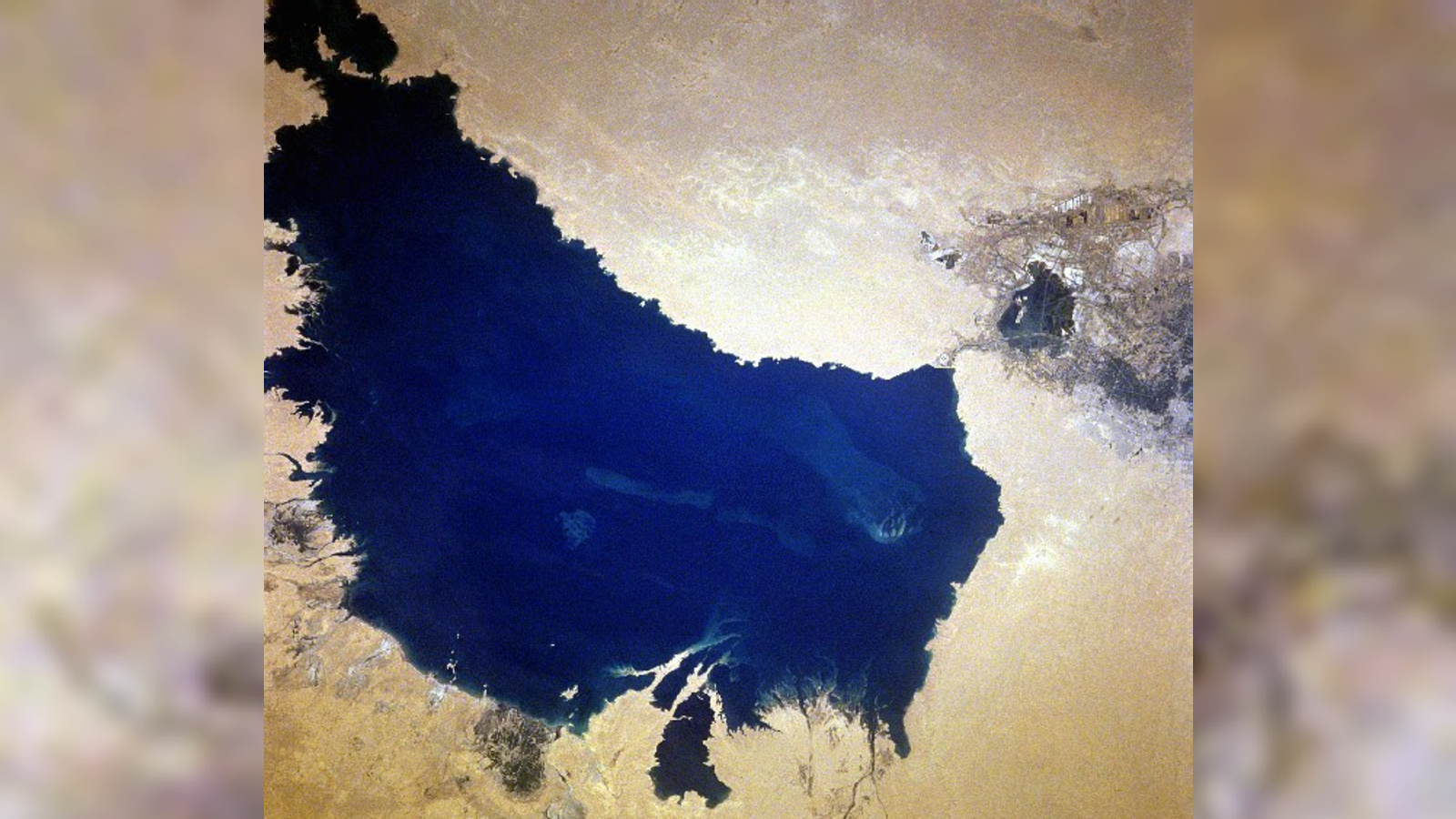QUICK FACTS
Where is it? Razazah Lake, Iraq [32.66166243, 43.6737757]
What’s in the photo? A multicolored artificial lake surrounded by agricultural crop circles
Who took the photo? An unnamed astronaut on the International Space Station (ISS)
When was it taken? Sept. 23, 2024
This intriguing astronaut photo shows the striking duality of an artificial lake in Iraq, which has slowly transformed into a salty, multicolored puddle after years of drought. It is also the site of hundreds of eerie human-made “crop circles.”
Lake Razazah, also known as Baḩr al-Milḩ or Lake Milh, is an artificial lake located to the west of the city of Karbala (visible in the photo). The body of water was created in the 1970s by diverting the overflow of the nearby Lake Habbaniyah through a canal and into a natural depression. In the decades since, the lake has become increasingly salty as minerals from the lake’s bed dissolved into the water. (Baḩr al-Milḩ means “Sea of Salt” in Arabic.)
In the photo, the lake is split into two colors: Pinky red and swampy green. The different colors are the result of high concentrations of algae in the water, according to NASA’s Earth Observatory. Each half of the lake is almost completely cut off from the other and has different chemistry and salinity levels, meaning they play host to different species of algae, hence the contrasting colors.
However, the lake has not always looked like this. The colors only emerged during droughts in the last decade, when the water levels dropped to between 16 and 32 feet (5 and 10 meters). Before then, the lake was much deeper and had a more traditional blue hue.
The lake also used to cover a much wider area, and — at certain points — it used to be one the largest freshwater lakes in Iraq, Reuters previously reported.
Related: See all the best images of Earth from space

To the southwest of the lake, hundreds of eerily circular dark patches litter the surrounding landscape. These are circular fields that are watered using center-pivot irrigation systems, where a single large arm sprays water as it rotates around the field like the arms of a clock, according to the Earth Observatory.
The creation of these fields has also likely contributed to the colorful lake’s decline, as water from the lake and the nearby Euphrates River, which feeds into Lake Habbaniyah, was used to irrigate the circular paddocks. The crop circles would have originally hugged the Razazah’s shoreline, but a significant gap has now opened up as the lake shrunk.
In the initial years after Razazah was formed, fish were introduced to the lake and a thriving wetland ecosystem emerged along the shoreline, which was home to a wide variety of vegetation and birds. However, as the lake has dried up, the fish disappeared and the wetlands slowly perished, according to BirdLife International.
Razazah is not the only artificial lake in Iraq. Around 250 miles (400 km) to the northeast lies Lake Dukan — a “Christmas tree-shaped” body of water that was created by damming a nearby river, which also plays host to striking algal blooms.
